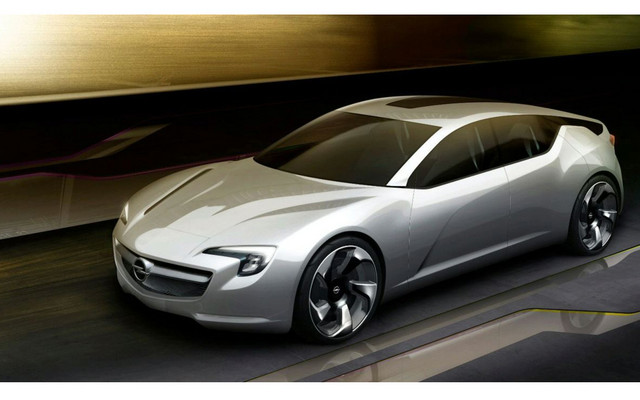Opel Flextreme GT/E: the future takes form
These are the words used in the Swiss press release to describe the Opel Flextreme GT/E prototype from General-Motors. After coming out with the Ampera concept, a European version of the Chevrolet Volt, engineers from the Opel division of GM, go a step further this time by exploring the extreme functionality of form.
For example, this totally new concept with a very low silhouette boasts an air penetration coefficient of only 0.22.
The unveiling in Geneva of this Opel Flextreme GT/E coupé does not fail to remind us that this German manufacturer has just been saved from bankruptcy, following GM’s decision to keep this very important brand on European markets under it’s wing. It will be noted that the British division of GM, by the name of Vauxhall, was also saved by this agreement.
Here is a synopsis of the Opel press release:
The Flextreme GT/E prototype proves how technology of increased car autonomy (E-REV / Extended Range Electric Vehicle)) can be adapted to large or middle sized cars and become as interesting on a compact such as the next Ampera.
People at Opel call this strategy “unlimited e-mobility”: Adapting the ultra sober motorization system – which liberates from the necessity of fuel feeding, by going all electric – to vehicles of all market segments. For an Opel style ride with zero CO2 emission, the Flextreme GT/E concept proves that the size of the car is not an issue.
The highly studied design of the Flextreme GT/E allows a drag coefficient of only 0.22: it can thus reach a top speed of 200 km/h, conserve it’s energy and increase it’s autonomy.
Exterior design: sensual efficiency
The Flextreme GT/E profile stands out because of its’ invisible quarter panels. The floating type design prolongs a line below the window panel over to the roof arch, which adds fluidity to the lateral lines of the car body. The dynamic character of this car is enhanced with a comma, typical of Opel, with a new style: this signature comma now flows in an energetic movement from the base of the centre post into the lower part of the front fender.
Access to the passenger compartment is made easier through the use of back doors that are articulated towards the back, an evolution of the Opel FlexDoors system installed on the new generation monospace Meriva. For a clean cut look, all exterior door handles have been replaced by light sensors, activated open by hand movement.
Transparency of the roof centre glass pane is variable. In the cold of winter, it allows sunlight in to heat the interior and, in the summer, it becomes dark to ward off heat and retain coolness. The duct that runs along the edge of the roof at the back is used for additional cooling of the battery and electronic components.
Managing air flow and reducing weight
The Flextreme GT/E design also explores the possibilities linked to changes in form according to actual speed. When speed exceeds 50 km/h, a vertical panel comes up from the back of the rear wheel arch air extractor and runs along the body. These 350 mm long lateral spoilers guide high speed air flow around the angles at the back of the vehicle and reduce the importance of turbulence.
The weight of the body shell has been reduced by the use of composite carbon body side panels, of polycarbonate window panels and of aluminium alloy structural elements.
Innovative propulsion
This high performance prototype also includes the revolutionary E-REV system by GM, already developed for the Opel Ampera. The Flextreme GT/E is proof of the adaptability of this technology, as it can be installed in a larger car, a medium sized four-door sedan.
In spite of it’s larger size and of a maximum speed of 200 km/h, the Flextreme GT/E should perform along the same lines as the Ampera: an autonomy of 60 kilometres on the battery – with zero CO2 emission – and a total autonomy of 500 kilometres. Average fuel consumption is estimated at 1,6 L/100 km, with CO2 emissions of less than 40 g/km.
Unlike on a hybrid vehicle, the wheels on the Flextreme GT/E are driven by electricity at all times. For classic treks of up to 60 kilometres, energy is supplied by a lithium-ion T type battery, hidden under the floor and back seats.
The engine linked to the electric moto-propulsion group puts out an instantaneous torque of 370 Nm, with good responsiveness and a 0-100 km/h count of less than nine seconds.
The Flextreme GT/E prototype marks a new stage in Opel’s march towards automobile electrification, comprising a large choice of products using various technologies, with batteries, generators increasing autonomy, hybrids and fuel cells.












